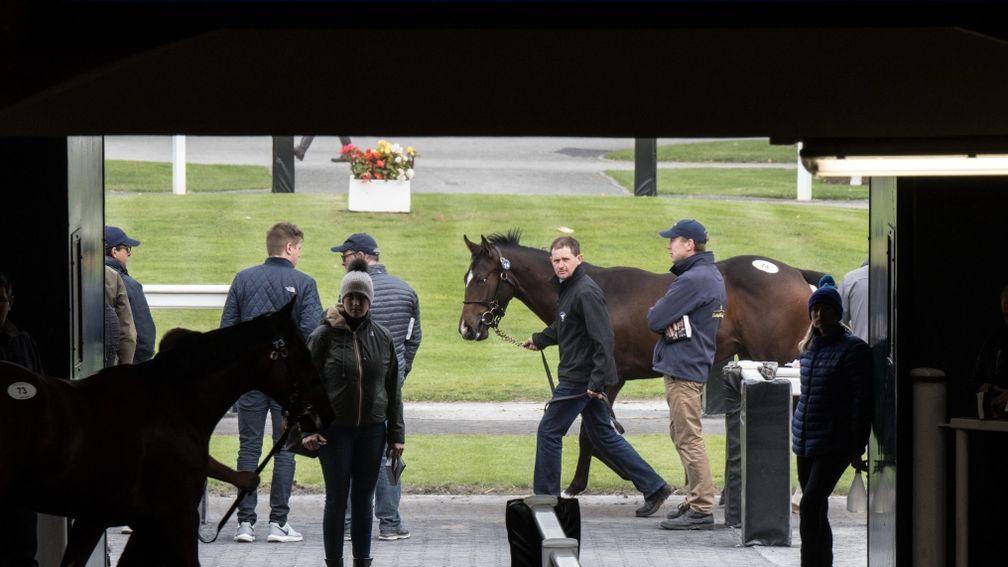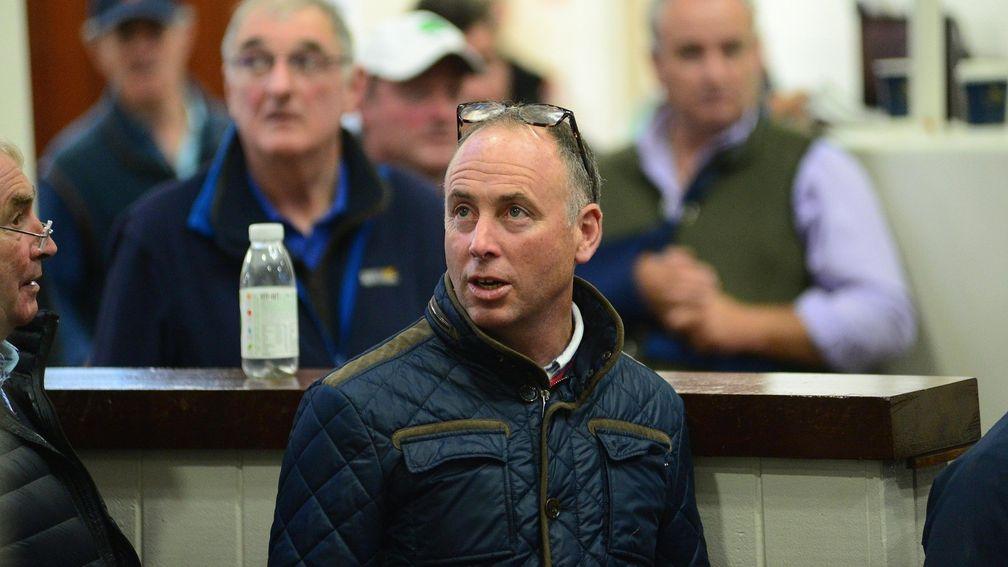Crystal clear warning signs as clearance rate crumbles at Fairyhouse
115 yearlings failed to find a buyer during the two sessions of Part One

Part one of the Tattersalls Ireland September Yearling Sale concluded on Wednesday evening with some worrying signs for breeders, as all key market metrics showed year-on-year decreases.
The aggregate of €10,488,000 was down eight per cent on 2017's corresponding figure, while the average dipped by 11 per cent to €25,518 and the median was down by €3,000 to €20,000.
But arguably the most troubling sign was the clearance rate of 78 per cent, with 411 of 526 offered lots changing hands, leaving 115 yearlings still to find a buyer.
Those figures would seem a crystal clear sign that a swell in the number of yearlings has not been matched by an increase in demand, as 12 months ago the clearance rate had been 90 per cent, when 401 of the 448 lots on offer found a new owner, leaving just 47 yearlings still to be moved on.
In plain terms, 78 more yearlings were offered this time around but only ten more lots changed hands.
Some highlighted that the quality of this year's yearling crop has been negatively impacted by a harsh winter followed by a searing summer, leaving many youngsters behind the curve of previous crop's physical development.
While there may be an element of truth behind this theory, breeders would be ill advised to let something as random as the weather impact their thinking and future decisions.
The looming spectre of Brexit was a factor pinpointed by many as stemming demand, with Britain's imminent departure from the European Union clouding the economic outlook for those without the deepest of pockets.
"We're on the cliff edge with Brexit and that's causing a lot of uncertainty," said Joe Foley of Ballyhane Stud. "Demand seems to be down but people are trading as best they can in the circumstances."
Brendan Holland of Grove Stud, who sold the sale-topping Kodiac colt to Shadwell for €275,000, echoed Foley's thoughts saying: "The uncertainty caused by Brexit is a big problem. The industry will carry on but in the short term that uncertainty will make it difficult for everybody."

However, Holland was keen to stress he believes that myriad factors beyond the perilous political landscape are facing the industry, including the problems created by those within the bloodstock community.
"Brexit is coinciding with huge yearling numbers and even bigger foal numbers coming through, so there's two things coming at once," he said. "People will say low prize-money is a problem, and it is a problem. People will also say high stud fees are a problem, and they are.
"But if you lower stud fees you'd have even more foals being produced, and if you had higher prize-money you'd also have more foals being produced. So it's too simplistic to say one or the other is causing the problem.
"There is a certain demand for horses in England and Ireland, regardless of prize-money and stud fees, and it's not changing. At the moment we're producing beyond demand."
In light of Holland's comments it is worth noting that over the last five renewals of the Tattersalls Ireland September Sale the number of lots sold has remained relatively static, with a low of 397 in 2014 and high of 411 coming this week.
However, in that same period, catalogue numbers have swollen from 464 in 2014 to 560 this year.
It should also be noted that this week's average of €25,518 and median of €20,000 are, in fact, the second-highest ever recorded at the September Yearling Sale, suggesting that the issue is one of oversupply as opposed to a sudden deficit in buyers or budgets.
With increasing crop sizes flying in the face of stagnant levels of demand, Holland was among those to say the results at Tattersalls Ireland had not come as a great surprise, for all that they remained a source of anxiety for the remainder of the yearling sale season and beyond.
"I don't think expectations are particularly high at the moment," he said. "We're all concerned about the middle part of the market because demand is weak, but nothing is going to change in the short term"
Another to offer a bleak prognosis was agent Matt Coleman, who said: "Throughout the yearling sale season and the breeze-up season next year I think the lower end will be extremely tough as I just don't think there are enough agents and trainers with orders.
"There's too many horses, too much racing and not enough prize-money. I actually think trade this week has been strong for the right horses, but across the bloodstock market the lower end is extremely tricky."
It is entirely possible that factors such as Brexit, prize-money levels and the weather have had - and will continue to have - consequences for levels of trade at this year's yearling sales, particularly below the uppermost echelons.
But whatever their impact, those elements are beyond the control of breeders. The same cannot be said about the number of horses being produced on both sides of the Irish Sea.
Given that 115 yearlings failed to find a buyer during the same week that the Thoroughbred Breeders' Association published a report stating that small- to medium-sized operations are "facing extinction", the time to think long and hard about which mares will be bred from next year appears to be now.
More news from the Tattersalls Ireland September Sale:
Night Of Thunder colt steals the show in September Yearling Sale opener
Shadwell land €275,000 Kodiac colt in challenging second session
Published on 27 September 2018inNews
Last updated 16:43, 27 September 2018
- Well-related winners and placed performers feature at the Tattersalls Cheltenham April Sale
- ‘It’s been constant pressure for the last six months’ - up-and-coming consignors out to make dreams come true at the Doncaster Breeze-Up Sale
- Three new board members for the National Stud
- Hide The Evidence a first winner for Sands Of Mali with victory at Bordeaux Le Bouscat
- Showcasing filly from a deep Moyglare family set for Gowran Park debut on Tuesday
- Well-related winners and placed performers feature at the Tattersalls Cheltenham April Sale
- ‘It’s been constant pressure for the last six months’ - up-and-coming consignors out to make dreams come true at the Doncaster Breeze-Up Sale
- Three new board members for the National Stud
- Hide The Evidence a first winner for Sands Of Mali with victory at Bordeaux Le Bouscat
- Showcasing filly from a deep Moyglare family set for Gowran Park debut on Tuesday